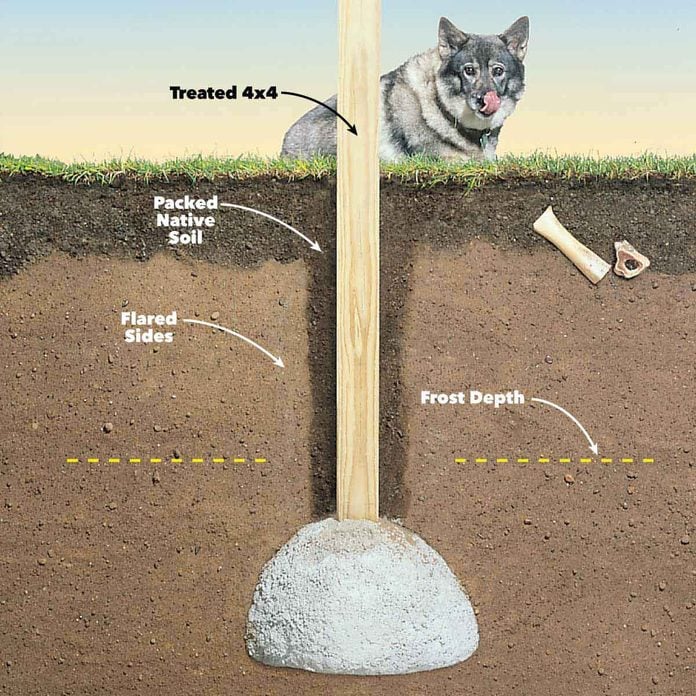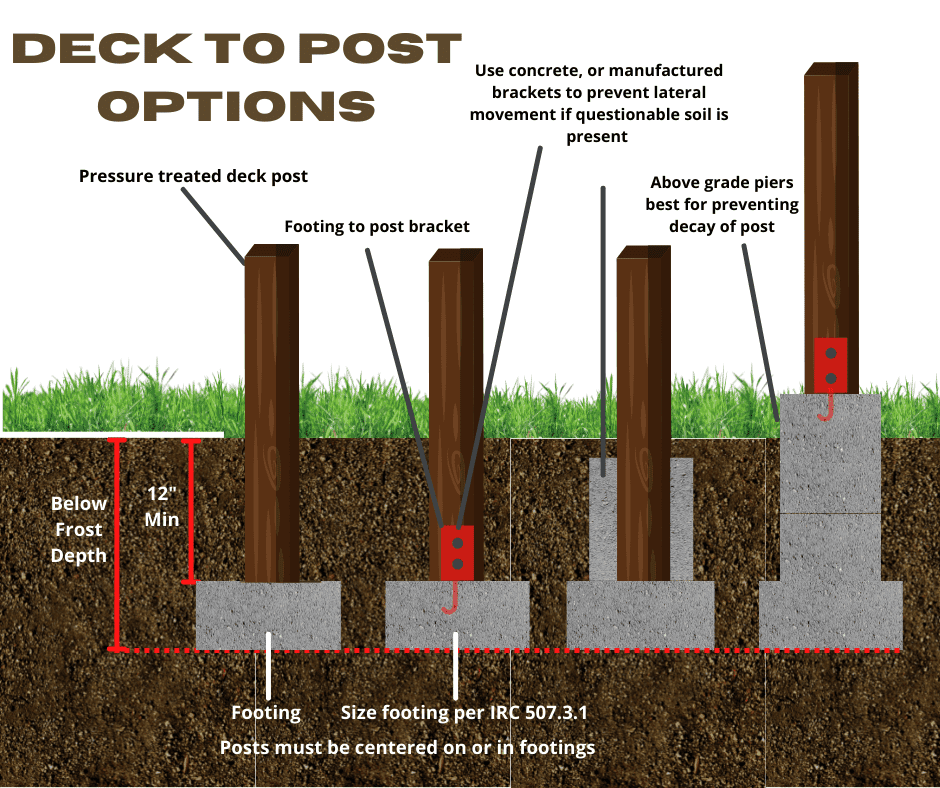Protect Structures, Enduring Impacts: Understanding the Art of Deck Footings Installment
Protect Structures, Enduring Impacts: Understanding the Art of Deck Footings Installment
Blog Article
Optimize the Life Expectancy of Your Deck With Strong and reliable Grounds
In order to totally make best use of the life expectancy of your deck, it is critical to make sure that it is built on strong and trustworthy grounds. These footings develop the structure of your deck, offering stability and assistance, and are typically the distinction between a deck that lasts for decades and one that requires continuous repair work. In this discussion, we will check out the value of trustworthy grounds, the various types of strong footing materials, proper installation strategies, and just how to keep and inspect your deck's footings to prevent damage.
Importance of Dependable Footings
When it comes to making the most of the lifespan of your deck,The relevance of dependable footings can not be overemphasized. The footings function as the structure upon which the whole framework relaxes, offering stability and support. Without a strong ground, the deck is vulnerable to shifting, sinking, and also collapse, which can substantially decrease its life expectancy and present safety threats.

Selecting the best type of ground is additionally essential. Employing an expert to examine the dirt, design the footings, and guarantee proper installation is highly recommended.
Purchasing reliable grounds may include extra expense and effort upfront, but it is a worthwhile investment that will add to the lasting durability and safety of your deck. By ensuring a solid structure, you can enjoy your deck for years to come, knowing that it is built to stand up to the examination of time.
Kinds of Solid Ground Materials
To guarantee the stability and longevity of your deck, it is important to take into consideration the various types of strong footing materials offered. The choice of footing material is essential as it supplies the required support and security to stand up to the weight and load of the deck framework.
One common and reliable product utilized for deck grounds is concrete. Concrete grounds are sturdy and supply outstanding security.
For areas with bad dirt conditions, such as loose or large soils, a ground system that utilizes steel or composite piers may be favored. Deck Footings. These piers are driven deep into the ground to reach secure soil layers, making sure the security of the deck
Sometimes, deck grounds can also be built making use of treated lumber. Nonetheless, it is necessary to make sure that the lumber is properly treated to stand up to rot and decay brought on by exposure to wetness and insects.
When picking a ground product for your deck, it is important to consider elements such as dirt problems, climate, and local structure codes. Consulting with a professional contractor or structural engineer can help figure out one of the most ideal ground product for your details deck task.
Correct Installation Methods for Footings
Thinking about the relevance of guaranteeing stability and longevity for your deck, it is necessary to recognize the correct installation techniques for footings. The success of your deck project relies heavily on the stability of its foundation, which is why following the appropriate setup methods is important.
Most importantly, it is required to identify the proper dimension and depth of the grounds based upon the layout and lots needs of your deck. This information can be gotten from building codes or via assessment with a structural engineer. As a general guideline, grounds need to be at least 12 inches in size and prolong below the frost line to prevent changing or resolving.
Once the measurements are established, the following action is excavation. Digging the holes for the footings need to be done with accuracy, making certain they are deep adequate and have a degree base. Deck Footings. This will certainly give a stable base for the footings
To even more enhance the stability of the footings, it is recommended to make use of a concrete blend with article a toughness of a minimum of 3,000 psi. This will certainly make certain the grounds can hold up against the weight and pressures applied by the deck.
Throughout setup, it is very important to maintain the footings degree and straightened effectively. This can be attained by utilizing a degree and string lines to lead the positioning of each footing.
Keeping and Inspecting Your Deck's Grounds
Regular upkeep and extensive inspections are vital for making certain the lasting security and security of your deck's grounds. Over time, footings can yield to put on and tear, weather, and dirt movement, which can jeopardize their architectural stability. To make best use of the life expectancy of your deck's footings, it is crucial to apply a regular upkeep regimen and perform complete evaluations.

Furthermore, it is crucial to examine footings for any kind of signs of damage or degeneration. This includes checking for splits, divides, or collapsing concrete, as well as any kind of signs of movement or negotiation. Any problems need to be resolved quickly to stop additional damages and guarantee the stability of the deck.
In addition, it is recommended to inspect the surrounding soil for any kind of signs of erosion or changing. Dirt activity can influence the security of the footings, so it is very important to deal with any type of soil-related issues without delay.
Indications of Ground Damage and How to Address Them
Footing damages can pose serious risks to the stability and safety of your deck, making it vital to promptly recognize and address any type of indicators of wear and tear. One of the most common indicators of footing damage is sinking or settling of the deck. This can happen due to soil disintegration, poor footings, or bad building and construction methods. If you observe that your deck is unequal or leaning, it is important to take immediate action to avoid additional damage. One more indicator of footing damages is breaking or he has a good point crumbling of the concrete footings. This can be brought on by freeze-thaw cycles, excessive wetness, or low quality concrete. If you observe any type of fractures or damage in the grounds, it is very important to have them checked and fixed by a specialist. In addition, if you see any movement or moving of the deck, such as a deck that really feels unstable when walked on or wobbles when weight is applied, it can be a sign of footing damage. In such instances, it is recommended to seek advice from a structural engineer or a professional service provider to analyze the level of the damages and establish the appropriate strategy. Bear in mind, attending to footing damage quickly can help ensure the long-lasting stability and safety and security of your deck.
Conclusion
In verdict, ensuring the reliability and stamina of grounds is vital for taking full advantage of the life-span of your deck. By utilizing solid ground products and appropriately mounting them, you can prevent damage and preserve the security of your deck.
These footings create the structure of your deck, offering stability and support, and are typically the difference between a deck that lasts for years and one that requires continuous fixings. In this conversation, we will check out the importance of trustworthy grounds, the different kinds of strong footing materials, appropriate installation techniques, and exactly how to keep and inspect your deck's grounds to stop damage.Normal upkeep and complete inspections are necessary for making certain the long-term security and safety and security of your deck's footings. Remember, addressing footing damage immediately can help ensure the long-lasting stability and safety and security of your deck.
By making use of solid ground products and effectively installing them, you can protect against damages and preserve go to this site the stability of your deck.
Report this page